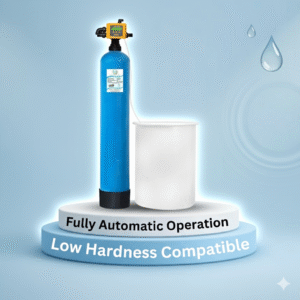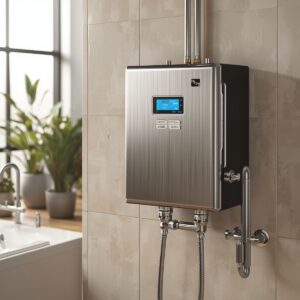Rotameter Flow Meter – Everything You Need to Know
When it comes to measuring the flow of liquids or gases, one of the simplest yet most effective devices you’ll find is a rotameter flow meter. Whether you’re running a small laboratory setup or managing a large water treatment plant, this instrument can be a game-changer.
What is a Rotameter Flow Meter?
A rotameter flow meter measures the rate at which a liquid or gas passes through a pipeline. It consists of a tapered, transparent tube with a float inside. As the fluid flows upward through the tube, it lifts the float. The float rises until the upward force from the fluid equals the weight of the float. The position of the float can then be read on a scale printed on the tube, which directly corresponds to the flow rate.
Why Rotameters Are Popular
Simple Design: No electronics, no complicated moving parts.
Affordable: Cheaper than digital flow meters but still accurate.
Visual Monitoring: You can see the flow at a glance.
Versatile: Works with both liquids and gases in many industries.
How Does a Rotameter Flow Meter Work?
The principle is known as variable area flow measurement. The tube’s diameter increases from bottom to top. As the flow increases, the float rises higher to allow more fluid to pass. This movement gives you a direct, instantaneous reading of flow rate without needing external power or sensors.
Applications of Rotameter Flow Meters
Water Treatment Plants: Monitoring inlet and outlet flows.
Reverse Osmosis (RO) Systems: Checking feed water and permeate flow.
Chemical Dosing: Ensuring accurate chemical injection rates.
Industrial Processes: Tracking air, gas, or liquid flow in production lines.
Laboratories: Measuring small-scale fluid or gas flow.
Key Benefits of Using Rotameter Flow Meters
Reliable Accuracy: Properly calibrated rotameters deliver consistent readings.
Low Maintenance: With no electronics, maintenance is minimal.
Quick Installation: Just mount it vertically in your pipeline and you’re done.
Durability: Modern rotameters use materials like acrylic, glass, or stainless steel for long service life.
Choosing the Right Rotameter Flow Meter
When selecting a rotameter, consider:
Flow Range: Make sure the meter’s range matches your application.
Material: Acrylic or PVC for clean water; stainless steel for chemicals.
Fluid Type: Some rotameters are designed for liquids, others for gases.
Pressure and Temperature: Check the meter’s ratings to avoid damage.
Installation and Maintenance Tips
Install the rotameter vertically with the flow going upward.
Avoid air bubbles or debris in the fluid to maintain accuracy.
Periodically clean the tube and float to prevent buildup.
Recalibrate if the float or scale looks worn.
Rotameter Flow Meter vs. Other Flow Meters
While digital or magnetic flow meters offer high-tech features, rotameters remain unbeatable for simplicity, cost, and visual indication. For many applications, they’re all you need to ensure proper flow.
Conclusion
A rotameter flow meter is a straightforward, dependable solution for monitoring flow rates in both industrial and residential systems. Its simple design, affordability, and reliability make it a staple in water treatment, chemical dosing, and laboratory applications.
If you’re looking for a no-fuss way to keep tabs on your fluid flow, a rotameter flow meter is the perfect choice.


